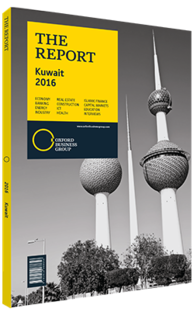Home to the largest per capita reserves and fourth-largest total reserves of crude oil within OPEC, Kuwait’s public finances have suffered in 2016 following the rapid decline in oil prices, which drove oil revenues down from $108.6bn in 2013 to $51.8bn in 2015. Despite this Kuwait has resisted significant budgetary cutbacks: spending levels in 2016 were cut by just 1.6%, and the considerable financial buffers built up from budget surpluses in the years leading up to 2014 are expected to cushion the budget deficit. The country continues to push ahead with key public investments, with Parliament allocating $155bn to the Kuwait Development Plan 2015-20 to fund infrastructure, utilities and housing developments. The plan focuses on further integrating the private sector into areas of the economy traditionally under state control and aims to raise the non-oil sector’s GDP contribution to 64% in 2015-20, up from an average of 45.1% in 2010-13. Elsewhere promising moves are being made to cut state subsidies, with the government opting to liberalise diesel and kerosene prices and reduce subsidies on aviation fuel in January 2015, generating savings equal to 0.3% of GDP.












